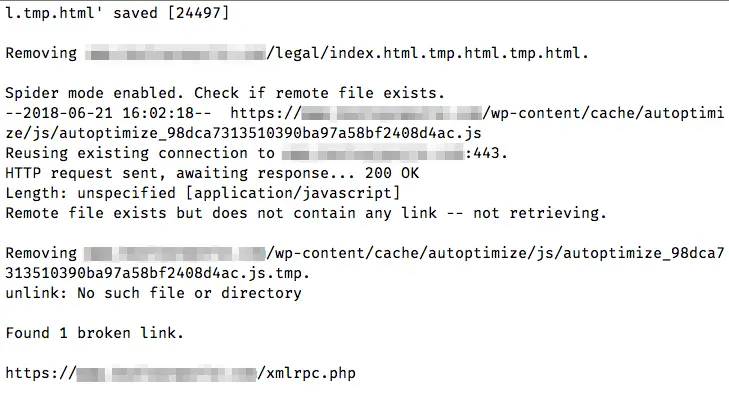
wget URL1 URL2 Set User Agent in wget command
WGET SPIDER DOWNLOAD
The wget command can download multiple files or webpages at once. wget -O Download Multiple files and pages With -O (uppercase o) option we can specify different output file name.įollowing wget command will download file and save it as. Save with different filenameīy default wget command will save the download file same name as the remote file. The file will be saved with the same name as remote filename. Since we only used the url, not a specific file name, output will be saved as "index.html".įollowing command will download the '' file from the website. To download a web page or file, simply use the wget command followed by the URL of the web page or file.
WGET SPIDER INSTALL
To install Wget on Red Hat/CentOS and Fedora use the following command: yum install wget Download Web pages with wget commandĬapturing a single web page with wget is straightforward. To install Wget on Debian and Ubuntu-based Linux systems, run the following command.
WGET SPIDER HOW TO
In this tutorial we will see how to use wget command with examples. The wget command in Linux support HTTP, HTTPS as well as FTP protocol. The wget is a Linux command line tool for download web pages and files from the internet. HEAD /content/images/2019/01/tpvd27rgco7ssa21.jpg HTTP/1.Linux wget Command Examples, Tips and Tricks Remote file does not exist - broken link!!! It will also return the 5 lines below that line so that you can see the resource concerned ( HEAD) and the page where the resource was referenced ( Referer). Using grep we can take a look inside the log file, filtering out all the successful links and resources, and only find references to the lines which contain the phrase broken link.

| egrep -A 1 '(^HEAD|^Referer:|^Remote file does not)' > ~/wget.log wget -spider -debug -e robots=off -r -p 2>&1 \

The command to give wget is as follows, this will output the resulting file to your home directory ~/ so it may take a little while depending on the size of your website. With the installation complete, now it's time to find all the broken things. configure -with-ssl=openssl -with-libssl-prefix=/usr/local/ssl Download the source cd /tmpĬonfigure with openSSL.
WGET SPIDER FREE
Linux users should be able to use wget with debug mode without any additional work, so feel free to skip this part. Thankfully cURL is installed by default on OSX, so it's possible to use that to download and install wget. On OSX, using a package manager like Homebrew allows for the -with-debug option, but it doesn't appear to be working for me at the moment, luckily installing it from source is still an option. Turns out, it’s a pretty effective broken link finder.ĭebug mode is required for the command I'm going to run.

WGET SPIDER ARCHIVE
I've used wget before to create an offline archive ( mirror) of websites and even experimented with the spider flag but never put it to any real use.įor anyone not aware, the spider flag allows wget to function in an extremely basic web crawler, similar to Google's search/indexing technology and it can be used to follow every link it finds (including those of assets such as stylesheets etc) and log the results. And while fixing those was easy enough once pointed out to me, I wanted to know if there was any missing content that GSC had not found yet. After moving my blog from digital ocean a month ago I've had Google Search Console send me a few emails about broken links and missing content.


 0 kommentar(er)
0 kommentar(er)
